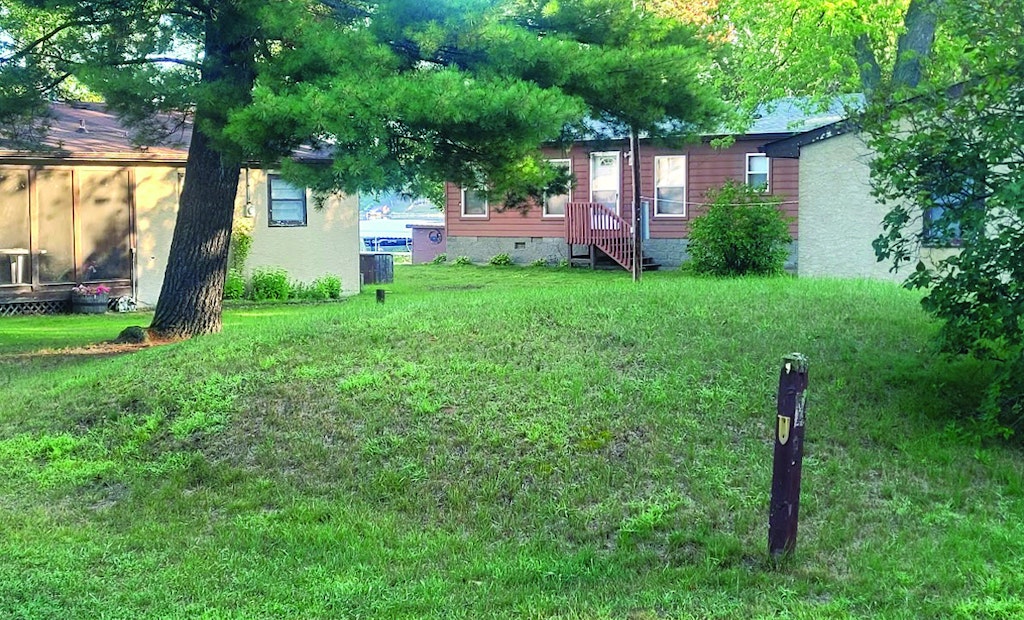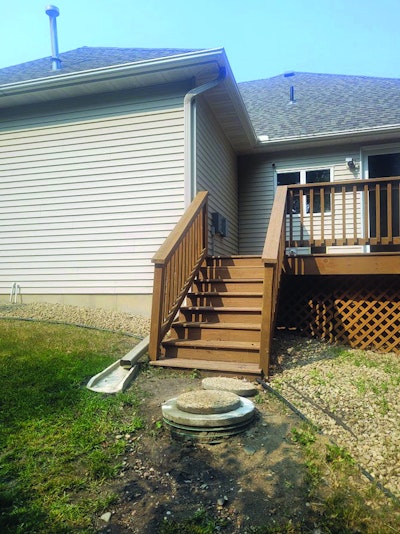
Small lots sometimes leave system designers or installers little choice over where to place treatment system components, such as placing a tank access close to deck stairs or use up much of the backyard for a mound. (Photos provided by Sara Heger)
When dealing with existing properties with homes, outbuildings and other improvements, it is often challenging to find a location for a replacement system. Historically, parcels were developed without setting aside sufficient room for a second septic system. This issue can arise...






